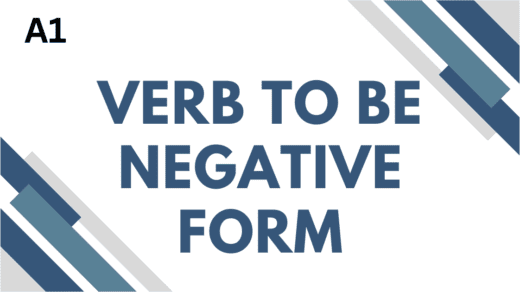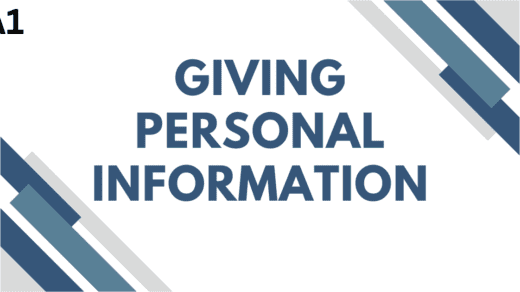Introduction to Question Words in English
Question words in English, also known as interrogative words, are essential components of the English language that help us form questions. They provide specific information about the subject, object, time, place, manner, and reason related to the inquiry. Understanding how to use question words in English can significantly enhance your communication skills and facilitate clearer interactions in both spoken and written English.
1. What
Definition: “What” is used to ask for information about something.
Examples:
- “What is your favorite book?”
- “What are you doing?”
Usage: “What” can be used in various contexts, including clarifications, definitions, or specifics about an item or concept.
2. Who
Definition: “Who” is used to ask about people.
Examples:
- “Who is your best friend?”
- “Who made this cake?”
Usage: This question word can inquire about individuals or groups.
3. Where
Definition: “Where” asks for information about a place or location.
Examples:
- “Where do you live?”
- “Where is the nearest coffee shop?”
Usage: “Where” helps to establish context regarding the geographical or spatial aspects of an inquiry.
4. When
Definition: “When” is used to ask about time.
Examples:
- Specific Time: When is your birthday?
- Duration: When did you start learning English?
Usage: “When” can be used to inquire about specific dates, times, or durations and can help clarify schedules or time-related queries.
5. Why
Definition: “Why” asks for reasons or explanations.
Examples:
- Reason: Why did you choose this profession?
- Cause and Effect: Why is the sky blue?
Usage: “Why” is often used in contexts that require justification or motives behind actions or beliefs.
6. How
Definition: “How” questions inquire about the manner or process of doing something.
Examples:
- Manner: How do you make a cake?
- Degree: How tall are you?
Usage: “How” can also be used in combination with other question words to form more complex inquiries, such as “How much” or “How many”.
7. Which
Definition: “Which” is used to ask about a specific item or choice from a defined set.
Examples:
- Choice: Which book do you prefer?
- Clarification: Which team won the match?
Usage: “Which” is typically used when the options are limited or specified, providing clarity in decision-making contexts.
8. Whose
Definition: “Whose” asks about possession.
Examples:
- Ownership: Whose jacket is this?
- Responsibility: Whose responsibility is it to organize the event?
Usage: “Whose” is fundamental in inquiries regarding ownership and relationships, allowing speakers to clarify the possessor.
9. Whom
Definition: “Whom” is the objective form of “who,” used to ask about the object of a verb or preposition.
Examples:
- Direct Object: Whom did you invite to the party?
- Object of a Preposition: To whom should I address the letter?
Usage: While “whom” is less commonly used in spoken English, it is still relevant in formal contexts or writing.
Forming Questions with Question Words in English
Basic Structure
The typical structure for questions involving question words is:
Question Word + Auxiliary Verb + Subject + Main Verb
Examples:
- “What are you watching?”
- “Where will they meet?”
This structure varies slightly depending on the auxiliary verb and tense.
Special Cases Related to Question Words in English
- Yes/No Questions: These do not always require a question word.
- “Are you coming?” (Answer: Yes/No)
- Embedded Questions: Sometimes, question words appear in statements.
- Examples:
- “I don’t know what he wants.”
- “Can you tell me where the library is?”
- Examples:
- Indirect Questions: Ask politely or with more formality.
- Examples:
- “Could you please tell me when the meeting starts?”
- “I wonder why she didn’t call.”
- Examples:
Question Words in English: Examples in Various Contexts
- Daily Life
- Context: Asking for directions.
- “How can I get to the nearest bus stop?”
- “Where is the train station?”
- Context: Asking for directions.
- Shopping
- “What time does the store open?”
- “How much are these shoes?”
- Social Interactions
- “Who do you want to invite to the party?”
- “What did you think of the movie?”
- Education
- “When is the exam?”
- “Why is studying important?”
Practice Exercises
To reinforce the lesson, the following exercises can be used:
- Fill-in-the-Blanks: Complete the sentences with the correct question word.
- “______ is your name?” (Who)
- “______ are we meeting?” (When)
- Transform Statements into Questions:
- Statement: “You are coming to the meeting.”
- Question: “Are you coming to the meeting?”
- Statement: “You are coming to the meeting.”
- Multiple Choice:
- Choose the correct question word: “______ did you go yesterday?” (Where/How/What)
- Correct Answer: Where
- Choose the correct question word: “______ did you go yesterday?” (Where/How/What)
Common Mistakes
- Using the wrong question word: Understand the context to choose appropriately.
- Incorrect: “What is your name?” if the response would be about time.
- Correct: “When is your name day?”
- Neglecting auxiliary verbs in questions: Ensure the structure follows the correct form.
- Incorrect: “What you want?”
- Correct: “What do you want?”
Tips for Using Question Words in English
- Sentence Structure: In English, question words usually come at the beginning of a question, followed by auxiliary verbs (e.g., “What do you think?”). Ensure the verb tense aligns with the subject.
- Indirect Questions: In indirect questions, the structure transforms. For example, instead of asking “What is your opinion?” you might say, “I would like to know what your opinion is.”
- Politeness: Using phrases such as “Could you please tell me…” or “I was wondering…” before the question can enhance politeness, especially in formal situations.
- Context Matters: Be conscious of the context in which you are asking questions. Adjust your language according to the audience, whether it’s in a professional setting or casual conversation.
Conclusion
Question words are crucial for effective communication in English. By understanding their uses and practicing their application, learners can enhance their questioning skills and engage more meaningfully in conversations. Mastering question words in English is essential for effective communication. They allow the speaker to seek specific information and engage in meaningful conversations. Practice using these words in various contexts to enhance your fluency and understanding of the language.




